Every racing driver who may count themselves fortunate enough to have a long and storied career in the sport hopes that, they can win a championship in their final seasons.
In Formula 1, Alain Prost, Sir Jackie Stewart, and most recently Nico Rosberg won the World Drivers’ Championship in their final seasons. In the WEC, Allan McNish retired after finally capturing his first elusive championship title.
And in Super GT, after twenty-one seasons as a full-time, professional racing driver, Takeshi Tsuchiya can now finally take his place among the great champions of the series. A series that he’s been a part of for over two decades, and will continue to be a part of in the future, even after he’s hung up the helmet.
What a journey it has been for the man who turned 44 years old a week before the final round of the season.
A journey that began in 1996, when Tsuchiya was just 23 years old, just promoted out of Formula 3.
Over the years, he has seen the GT300 class evolve from the amateur category with lightly tuned production cars that it was when he debuted, to the intense battleground of technical innovation that it is today, with many of the world’s greatest drivers opting to compete in the second tier.
Tsuchiya has quietly climbed the ranks to seventh all-time in career starts with 142 entries. He’s won seven races, and scored fourteen podiums in the GT300 category, and scored more than 300 career points in both GT500 and GT300 classes – one of only three drivers in the series’ brief but storied history to achieve this milestone.

And he is also the holder of Super GT’s longest streak of consecutive points finishes in either category – thirty-three straight points scoring finishes from 2002 to 2006.
He’s one of only a few contemporary drivers who have driven for all of the “Big Three” in GT500 – Toyota, Nissan, even Honda in a one-off appearance at the 1999 Suzuka 1000km. He’s also driven for Porsche, Mercedes-Benz, and even Aston Martin.
He drove with legends like Kunimitsu Takahashi and Masanori Sekiya in their farewell seasons, and has also shared rides with future champions in Super GT and abroad, such as Satoshi Motoyama, Manabu Orido, Hiroaki Ishiura, and future Australian Supercars champion James Courtney.
Top it all off with an overall victory in Super Taikyu’s 24 Hours of Tokachi, and seven productive seasons in Formula Nippon, it’s been an amazing career on the whole.
But the greatest share of his cherished memories as a driver have come driving for Tsuchiya Engineering, the team run by his father Haruo, a team that’s been around in Super GT for as long as he’s been driving. Under his father’s guidance, driving for his team in both categories, Tsuchiya grew as a driver, as an engineer, and as a human being.
It’s been an incredible 21-year journey. But the journey for Tsuchiya was not always easy.
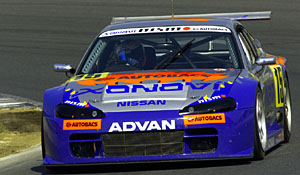
Until 2016, the closest Tsuchiya had ever come to capturing a championship was in 1999, driving for NISMO in a GT300 class Nissan Silvia. Tsuchiya and co-driver Yuji Ide led the championship by a single point with just one race to go, having won three of the last four races.
But in the last round of the season at Twin Ring Motegi, they would lose the championship by the same margin of one point, and ironically, it would be to his father’s team, and their Toyota MR2 driven by Morio Nitta and Shinichi Takagi.
In 2003 at Sportsland Sugo, now driving for TOM’s and their aquamarine WoodOne Toyota Supra, all Tsuchiya could do was watch in disbelief – and a bit of amusement – from the pit box at Toyota Team TOM’s as Juichi Wakisaka muscled his way past Erik Comas out of the final corner to win one of the all-time greatest races, and at the time, the closest finish in Super GT history.
And as it turned out, it was the closest Tsuchiya would ever get to winning a race in the top class in eleven seasons, of which he spent the last four without recording a podium finish. Third place in the 2005 GT500 championship with TOM’s was the closest he’d ever come to winning a premier class title.
After the “Lehman Shock” of 2009, Tsuchiya Engineering went on hiatus, coming back the following year with Takeshi himself serving as its driver and director. But for several years, Tsuchiya would have limited success as a journeyman racer – for his own team, and for several other privateers in GT300.
He witnessed a near-tragedy in the 2012 Fuji 500km, when his co-driver Tim Bergmeister suffered a horrific crash on the front straightaway that brought back memories of the near-tragedy that almost claimed the life of Tetsuya Ota fourteen years prior.
The frustrations in his prime, the hardships in his late career – it seemed as if Tsuchiya was destined to never become a champion in the series.
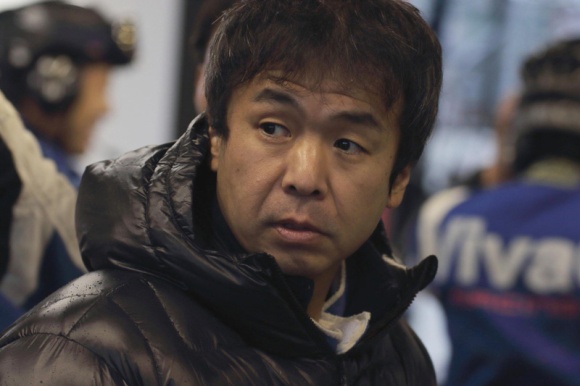
Every great story of redemption has an origin. Tsuchiya’s redemption started in 2014, as a wildcard entry in Super GT’s very first race in Buriram, Thailand. It was the first race for the Mother Chassis Toyota 86, a car that was conceived as a template for the future of the GT300 class.
And it was the prelude to Tsuchiya Engineering’s comeback in 2015. Under a new name, VivaC Team Tsuchiya, with a new title sponsor, and a new car, the Toyota 86 MC. Haruo-san returned to lead the team, and in addition to his fourth stint as their lead driver, Takeshi-san would serve as Team Tsuchiya’s chief engineer.
They also brought in Takamitsu Matsui, a relatively unknown 28-year-old rookie, as their apprentice driver.
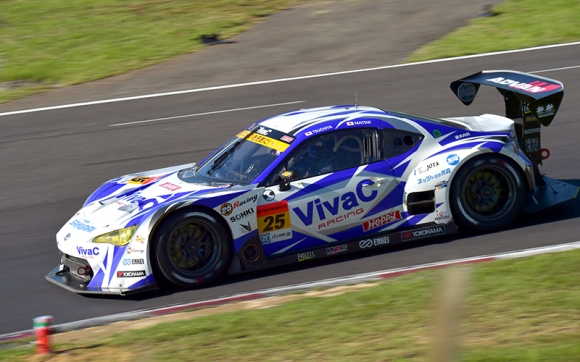
The team made surprising progress in their first season together. Tsuchiya scored the first Mother Chassis pole position in Buriram, where the car made its debut, and later that year in Sugo, the VivaC 86 MC scored its first victory. The first time Tsuchiya had tasted victory as a racing driver in sixteen years.
But there were setbacks, including bouts of poor reliability and a season-ending injury for Matsui not long after their win at Sugo.
In 2016, VivaC Team Tsuchiya came out of the gates strong, after the first three races, with two podiums and two pole positions, they were leading the GT300 championship. And between podium finishes at the Fuji 500km and Sugo, Tsuchiya added his first categorical victory in the 24 Hours of Nürburgring to his already stellar CV.
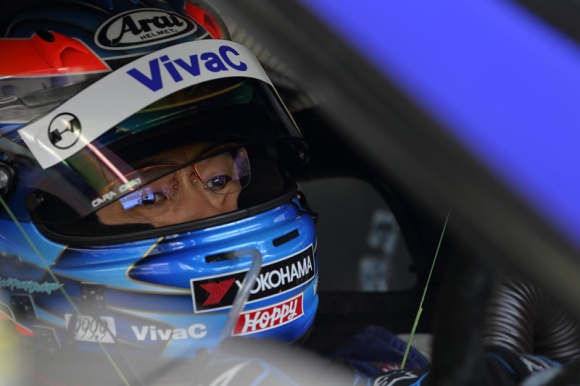
As a driver, Tsuchiya was now deferring the role of “lead driver” to his young apprentice Matsui, letting him run for pole position in qualifying, and giving him a larger share of the drive time during the race. And as the season went on, Matsui’s confidence as a driver began to grow – tested in the fire of competition, the pressure had created a diamond.
As an engineer, Tsuchiya had noticed that the Mother Chassis 86 was very kind to its tyres, and along with his father Haruo, they became more aggressive with their pit strategies. Opting to change only two tyres, or no tyres at all, on as many stops as they could to maximize track position. Other teams tried to copy them, but the VivaC team and their mechanics always seemed to find a way to execute it better.
One week before the 2016 race at Buriram, Tsuchiya told the press that this season would be his last as a full-time racing driver. The following week in Thailand, where his journey in the Toyota 86 began, Tsuchiya and his co-driver Matsui won from pole position.
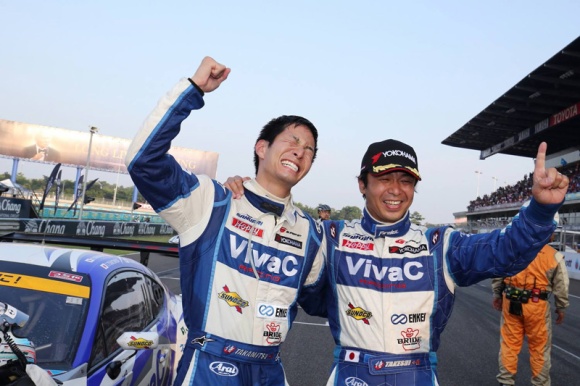
It would give Tsuchiya the chance to finally capture his elusive first championship, in his final opportunity to do so, at the same venue where he came so close in 1999.
On Saturday’s first race at Motegi, as most of their GT300 championship rivals hit trouble, the VivaC 86’s seventh-place finish would be good enough to extend their championship lead going into the final race on Sunday.
Sunday afternoon, Tsuchiya opened the race with his final stint as a full-time driver, before handing the car off to Matsui for the final leg. A conservative run for Tsuchiya, one by design, had some worried that the title would slip away from him once again.
But once again, they remained aggressive in the pits. A 19.7 second pit stop for fuel and a driver change gave Matsui plenty of time over the field, and Tsuchiya watched from his seat on the pit box, no longer a driver, but a chief engineer, pushing his young apprentice to drive straight into the lead, and never look back.
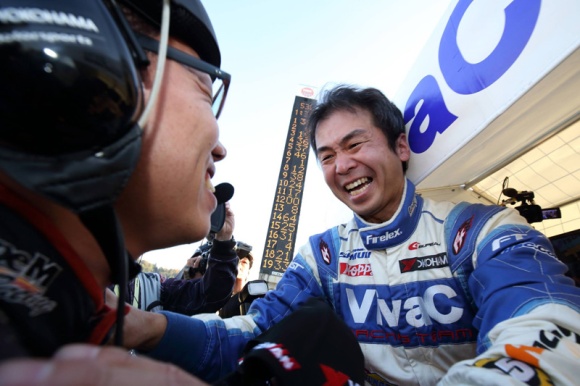
And at the end of 49 laps of racing, as his VivaC 86 took the chequered flag to take the win and the championship for VivaC Team Tsuchiya, all the emotion of a twenty-one year journey overcame not only Takeshi-san, but his father as well, who finally got the chance to see his son become a Super GT champion.
Tsuchiya will continue to serve as a third driver for the endurance races at Fuji and Suzuka, but after 24 years, driving will no longer be his main focus in racing.
He will now focus on his role as a full-time chief engineer, working with his father and, in time, transitioning into the role of team director at his family’s race team. There will be no more running out the string for other privateers, at least not in Super GT – he’s back home now.
And just as his predecessors did for him at the start of his career, Tsuchiya will pride himself on giving incredible opportunities to the next generation of drivers.
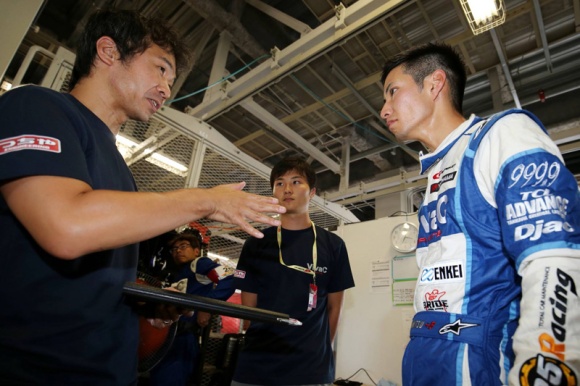
2016 was a breakout season for Matsui that has cemented him as a star of the future. And with the appointment of the brilliant and talented All-Japan Formula 3 Champion Kenta Yamashita as their new full-time driver, VivaC Team Tsuchiya stand as good a chance as ever to win it all again in 2017.
The journey is not over, but for Takeshi Tsuchiya, it will be much different from now on. It is not the end of the novel, but the start of a new chapter.
And it was only fitting that this long and epic chapter, filled with so many memories, concluded in storybook fashion: With the championship that he has so richly deserved.
